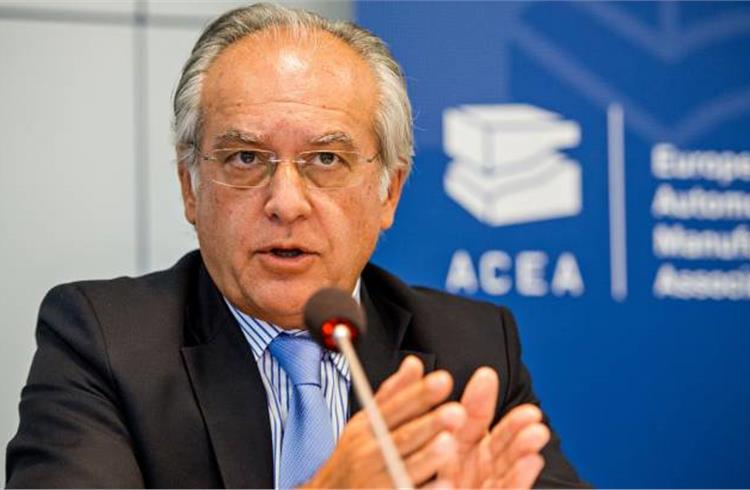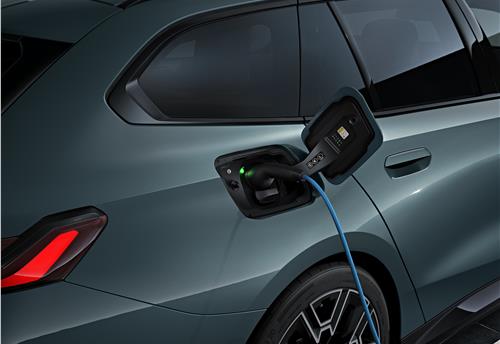ACEA moots realistic approach towards green mobility
Europe needs an ambitious – yet realistic – CO2 strategy; with a well‐balanced and coherent strategy for managing the gradual shift to low-carbon mobility. Policy makers really need to take a 360‐degree view of the impact of post-2021 CO2 targets, including the economic and social dimensions.
The European Automobile Manufacturers Association (ACEA) has called for a realistic approach towards achieving green mobility. While it stays committed to the goal of reducing CO2 targets, it has called for policy makers to be technology neutral.
The European Union saw passenger car sales around 15.1 million units last year, a growth of 3.4 percent, achieving a significant milestone of the crossing the symbolic 15-million mark for the first time since 2007. ACEA states that the European automobile industry is on a pathway to recovery, but even as it is coming close to the pre‐crisis figures after a decade, the situation still remains fragile.
Erik Jonnaert, secretary General of ACEA, in his message recently, stated that as the EU embarks on its journey for the year 2018, it remains crucial for maintaining the trajectory of recovery within Europe, as well as safeguarding its competitiveness on the global level. He stated that this is all the more important as the industry now faces new CO2 targets for passenger cars and vans.
Last year, the European Commission had presented its proposal for post‐2021 CO2 reductions – legislation that will have a major impact on the future of the European auto industry. Jonnaert said ACEA members are fully committed to further reducing CO2 emissions from their vehicles, spending a large part of the sector’s Euro 50.1 billion (Rs 382,964 crore) annual R&D investment on decarbonisation.
Joannaert, said “As part of the move towards low- and zero-emission vehicles, Europe will also need to address its impact on jobs across the value chain. Electric powertrains, for instance, have much less moving parts than the average combustion engine; their production does not only require different skills but also less manufacturing labour. Of course, the transition to low-carbon mobility will also create new jobs (for example in charging infrastructure and batteries), but in most cases these jobs will be created for people with other skills or located in other places (also outside the EU) than those working in automotive manufacturing today.”
He further stated that this is reason future CO2 targets should be accompanied by appropriate strategies to anticipate and manage this change in a socially-acceptable way. Questioning how deep and abrupt this structural change will be, he said that it will largely be defined by the ambition level of future targets. He welcomed the targets but stated that although the date for the long‐term CO2 targets has been set for 2030, the ambition level of the Commission’s current proposal is too aggressive to guarantee a gradual transition. The 30 percent target proposed for 2030 simply went beyond what was agreed by heads of state under the EU Climate and Energy Framework to meet the COP21 objectives.
Moreover, he said the proposal for an additional 15 percent reduction target already in 2025 was simply too much and too soon. The deadline within just four years after the CO2 targets were already set for 2021 would leave hardly any time for the industry to make the necessary technical changes to vehicles. And indeed the overly-aggressive targets would put the global competitiveness of the European auto industry at risk. He suggested that the policy makers, both at EU and member-state level, should be aware of the social implications of their decisions on post-2021 CO2 targets would have.
Joannaert said that regardless of what the ambition level would be, achieving future CO2 reductions will strongly depend on a much higher uptake of alternatively‐powered vehicles. And this would only happen after a EU‐wide roll‐out of recharging and refuelling infrastructure, as well as harmonised incentives to stimulate the customers to buy such vehicles. Particularly when they see the low and fragmented market uptake of alternatively‐powered vehicles across Europe today, Joannaert believes that the Commission’s CO2 proposal needs to be examined very carefully by all policy and decision makers.
He said that one important message that the ACEA had for them was, “When it comes to decarbonisation, it is the results that should matter, not the technological pathway that a manufacturer chooses to deliver them. In other words, policy makers should of course fix ambitious objectives for CO2 reductions, but they should not impose the technology choice – that would only stifle innovation.”
Technology neutral
The ACEA secretary general stated that unfortunately, they believed that the current CO2 proposal was not fully technology‐neutral, and by setting a benchmark for ‘low‐emission’ vehicles, the Commission aims to promote the uptake of alternative powertrains. Stating that the benchmark approach, as such, could be the right way forward – but not in its current shape. Because of the method of calculating the benchmark, it effectively pushed for pure battery electric vehicles, and did not sufficiently reward other alternatives, such as plug-in hybrids.
ACEA stated that despite the industry making major investments in electrically-chargeable vehicles and its ongoing efforts to expand the offer, electric cars still only accounted for less than 1.5 percent of the total EU sales. Moreover, their market share remained rather stagnant so far; growing by just 0.8 percent between 2014 and 2017. The association states that when they considered the market uptake of electric vehicles it was directly correlated to GDP per capita and affordability being a major barrier.
The apex body said that the fact that the market share of electrically‐chargeable cars was practically zero in EU countries with a GDP below 17,000 euros (Rs 13 lakh) said it all, and the transition to low- and zero-emission vehicles would not happen overnight. And a forced push for electrification, and any limitations or bans on the internal combustion engine, should be avoided as it would have negative implications for both consumers and society.
Erik Jonnaert, said: “As an industry we are fully committed to decarbonisation, but we can only do that with respect for our customers’ needs as well as the 12.6 million workers we employ directly and indirectly across Europe. A thriving, profitable business is a pre‐requisite for sustainability. After all, we want to make sure that we can produce clean vehicles that our customers want and can afford to buy.”
“To that end, Europe will need an ambitious – yet realistic – CO2 strategy; with a well‐balanced and coherent strategy for managing the gradual shift to low-carbon mobility. Policy makers really need to take a 360‐degree view of the impact of post-2021 CO2 targets, including the economic and social dimensions,” concluded, Joannaert.
RELATED ARTICLES
Nissan shows in-construction all-solid-state battery pilot line in Japan
Under the Nissan Ambition 2030 long-term vision, Nissan aims to launch EVs equipped with the batteries by fiscal year 20...
BMW Group sells 82,700 BEVs in Q1 2024, sees growth across all key markets
The company has delivered a total of 82,700 fully-electric BMW, Mini and Rolls-Royce vehicles to customers worldwide, up...
Lanxess and IBU-tec to develop iron oxides for LFP EV batteries
Collaboration aims to improve performance of LFP cathode material; reduced carbon footprint of batteries through use of ...





 By Autocar Pro News Desk
By Autocar Pro News Desk
 28 Feb 2018
28 Feb 2018
 4422 Views
4422 Views









